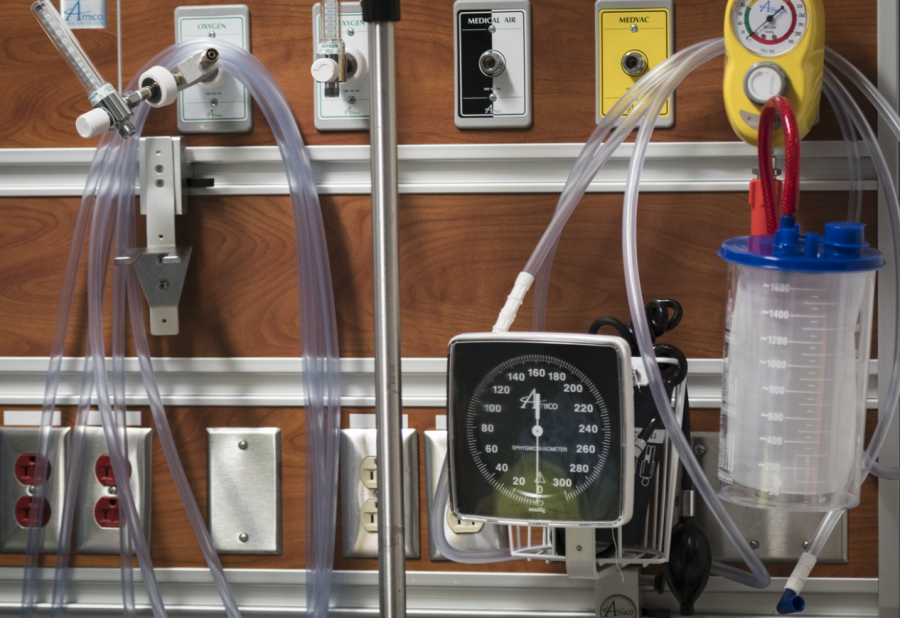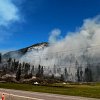Doctors say they are seeing an unusual spike in walking pneumonia cases in parts of Canada, particularly in kids, but their message for parents is not to panic, as treatment options are available.
Walking pneumonia is a mild form of pneumonia that often presents as a fever, cough or fatigue, but a small subset of severe cases can leave patients short of breath in need of oxygen or with high fevers that won’t break.
At Montreal Children's Hospital, infectious disease division director Dr. Earl Rubin says he’s noticed more cases in toddlers, which is younger than the typical school-age and young adult demographic the bacterial infection usually impacts.
“The numbers are increasing and we're seeing more severe cases where people need to be admitted to hospital and have some complications,” says Rubin, who has been observing this since late spring and early summer.

The “unusual” increase could be because of a lowered immunity post-pandemic, leaving more people susceptible to the infection. It’s also highly contagious – infecting one in three people in a household – and has an incubation period that can last a month, along with no vaccine to prevent it, says Rubin.
In the U.S., the Centre for Disease Control and Prevention reported in October a rise in walking pneumonia, especially in young children, over the last six months, peaking in late August.
Although public health agencies don't track walking pneumonia in Canada, health-care providers in Ontario, Quebec and British Columbia tell The Canadian Press they're seeing more cases.
While there is no formal laboratory-based surveillance for this pathogen, the Canadian Public Health Laboratory Network is on the lookout for unusual activity with mycoplasma, the bacteria that causes walking pneumonia, the Public Health Agency of Canada says.
Since August, B.C. Children’s Hospital says it’s recorded an increase in children with walking pneumonia in the emergency department, but said it would take a significant time to compile corresponding data and release numbers.
A couple months earlier, in May and June, McMaster Children’s Hospital started seeing rates of walking pneumonia grow and peak in September after seeing no cases for the past couple years, says Dr. Jeffrey Pernica, an infectious disease specialist at the hospital.
“These may well decrease as winter approaches,” says Pernica.
Dr. Camille Lemieux, chief of family medicine at Toronto's University Health Network, says physicians need to be aware of this increase – the first she's observed in her 30 years of practice – because it requires a different antibiotic than regular pneumonia, and patients won't get better without it.
“I've never seen a distinct uptick like this so quickly and suddenly,” says Lemieux.
Normally, if a child has a chest X-ray that shows signs of pneumonia, doctors prescribe amoxicillin or a relative of the drug that stops the growth of bacteria that causes the infection.
However, mycoplasma is atypical and doesn’t have a cell wall, making that medication ineffective. But another class of antibiotics, such as macrolides, would treat it.
Lemieux says walking pneumonia is “one of the first things" she now considers when diagnosing a sick patient. "A kid who's just not getting better, like with kind of mild or cold symptoms, but not getting better, particularly if they keep having a fever, has now become top of mind for me,” she says.
Doctors can test for walking pneumonia with a nasal or throat swab, which is then sent to a lab.
This unusual increase hasn’t been seen in Alberta at this point in time, says Dr. Warren Thirsk, an emergency medicine physician in Edmonton and president of Alberta Medical Association’s emergency medicine section.
“COVID-19 and influenza are guaranteed to be more serious,” he says. By comparison, Thirsk says walking pneumonia is a “drop in the ocean” of the respiratory season and that most people can recover at home without intervention.
It’s when a person has a fever for more than five days, symptoms that have persisted for more than three weeks, or need oxygen that they should seek medical attention, Thirsk says.
“The message is not to panic. It's just more raising awareness about what's happening. If you think that your child or your relative might be one of the people that's coming down with this, this is why you go and see your primary care provider so we can help you out,” says Dr. Allan Grill, chief of family medicine at Markham Stouffville Hospital.
However, 2.5 million people in Ontario don’t have a primary care doctor, which Grill says could impact emergency room wait times.
“Where do people go when they get sick and they don't have a primary care provider? They go to the emergency room. So there are potential ripple effects of seeing more cases of walking pneumonia."
While there is no vaccine for walking pneumonia, keeping up-to-date on flu, COVID-19 and RSV vaccines will make for a stronger immune system that will be less susceptible to bacterial infections, says Grill.

















